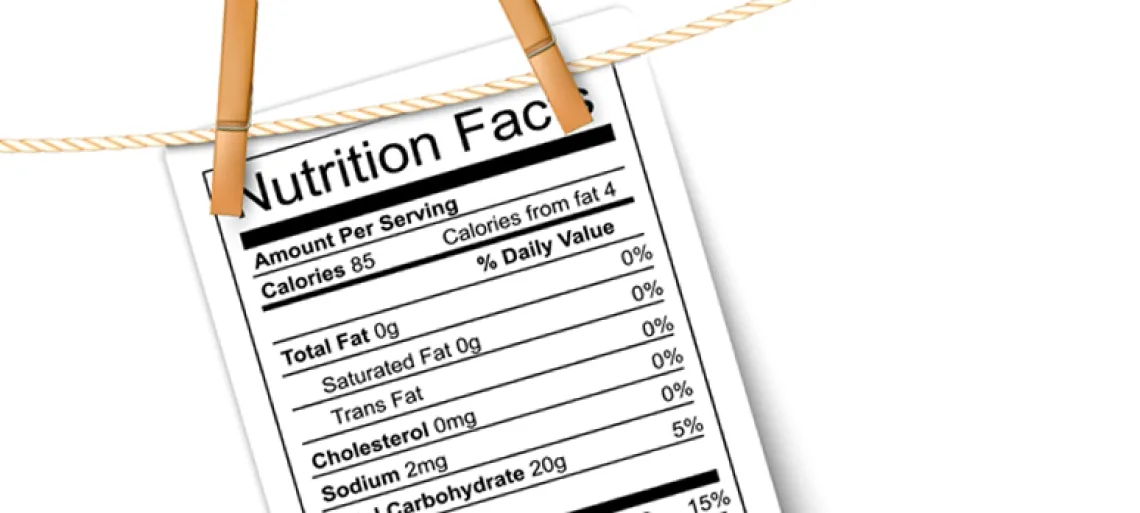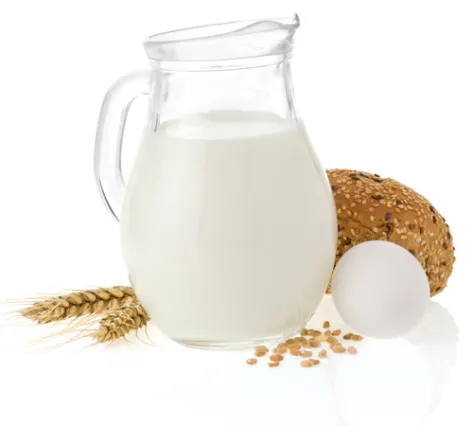Understanding the Nutrition Facts Label

Every nutrition facts label will contain information regarding individual serving sizes, as well as the total number of servings per container. This information will help you determine how many servings you are consuming, or how many servings are healthy to consume.
For example, if a package of chips lists that there are two servings per container, and you choose to eat the whole package, you would need to double the values for calories and other nutrient numbers.
©2023 ComPsych ® Corporation. All rights reserved. This information is for educational purposes only. It is always important to consult with the appropriate professional on financial, medical, legal, behavioral or other issues. As you read this information, it is your responsibility to make sure that the facts and ideas apply to your situation.

Calories and Calories from Fat
The number of calories you consume is directly related to the number of servings you choose to eat. The number of daily calories needed varies from person to person, so talk with your physician for accurate information.
The “calories from fat” section of the label lets you know how many calories come from fat in the product. For example, if you have a 200-calorie candy bar and there are 100 calories from fat, 50 percent of the total calories come from fat.
The U.S. Food and Drug Administration offers the following guidelines for calories:
- 40 calories = low
- 100 calories = moderate
- 400+ calories = high

Total Fat
Total fat can include many different kinds of fat:
- Saturated fat: often found in cheese, milk, cream, high fat meats, butter, and palm and coconut oils
- Trans fat: often found in baked goods and margarines
- Polyunsaturated: found in flaxseed, walnuts and some types of fish
- Monounsaturated: found in nuts, soybean oil, avocado and olive oil
The amount of fat each person should get in their diet varies, but most adults should get about 20-30 percent of their daily calories from fat. Less than 10 percent of daily calories should come from saturated fat. Trans fats should be avoided as much as possible. Monounsaturated and polyunsaturated fats are the most nutritious fats to include in your diet.

Cholesterol
Maintaining a diet that is low in cholesterol can help reduce the risk of heart disease. You can also lower your cholesterol by replacing saturated and trans fats with monounsaturated and polyunsaturated fats

Sodium
A diet low in sodium will help reduce the risk of high blood pressure. The CDC recommends that adults consume less than 1,500 mg of sodium per day. Talk with your doctor or nutritionist, as your dietary requirements may vary.

Total Carbohydrate
The U.S. Centers for Disease Control and Prevention recommend that people get most of their daily carbohydrate calories from vegetables, fruits and whole grains. Sugar also contains carbohydrates, but is not nutritionally valuable as the other foods mentioned.
Dietary fiber is usually listed on nutrition facts labels as:
- Soluble fiber: Includes oatmeal, nuts, seeds and many fruits
- Insoluble fiber: Includes whole wheat bread, barley, most vegetables and brown rice
It is important to get both of these types of fiber in your diet every day. Adults should get about 14 grams of fiber for every 1,000 calories consumed. At least half of your daily grains intake should be whole grains.

Proteins
Like most nutrients, your needed levels of protein will vary. Talk with your physician to get your daily requirements. Most Americans get plenty of protein, but from unhealthy sources. Choose low-fat options like lean meats and poultry, beans and dairy.

Vitamins
While most people use the Nutrition Facts Label to help them limit certain nutrients (like fat and carbohydrates) you can use the same label to help increase your intake of vitamins and other important nutrients. Choose foods with higher percent daily values for calcium, potassium, iron and vitamin D, as most Americans do not get enough of these nutrients.

Ingredients
The ingredients list on food labels lists each ingredient in descending order of prevalence by weight.

